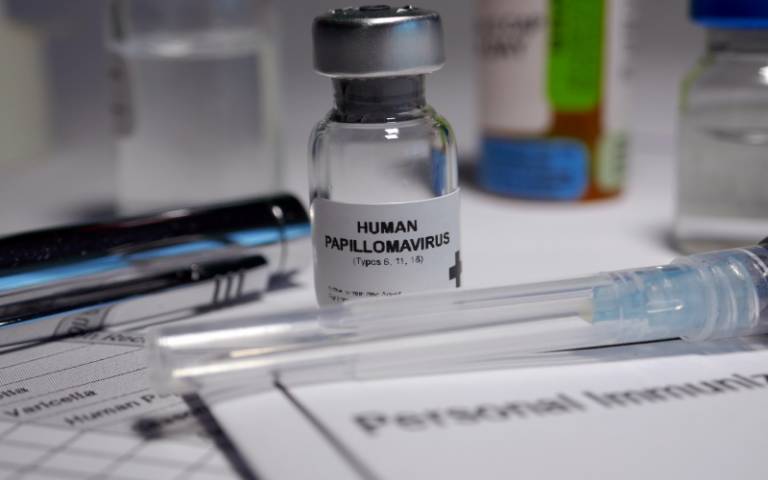Novel methods for analysing the cost-effectiveness of vaccine strategies
Research from UCL on the cost-effectiveness of the HPV vaccination strategy caused policy changes in Italy, the UK and Canada, while influencing other UK vaccination programmes.

12 April 2022
Predicting how effective a particular vaccination strategy will be is a challenge because there are many different scenarios to consider. Scientists employ complicated and time-consuming mathematical models to help the decision-making process.
Professor Gianluca Baio’s research in UCL’s Department of Statistical Science focuses on developing Bayesian modelling to provide cost-effectiveness analysis and solve decision-making problems in health systems. The models provide evidence to support cases submitted to regulatory bodies such as the National Institute for Health and Care Excellence (NICE) in England, for new health care interventions and help governments decide whether public funds should be used to pay for these interventions.
To overcome the limitations of standard models, Professor Baio and his research group developed a modelling framework based on a Bayesian evidence synthesis of the most relevant sources to adapt methods used widely in standard Health Technology Assessments (HTA). Specifically, the research team developed a Bayesian dynamic Markov model to allow for herd immunity and dynamic transmission of infection.
This novel approach was applied to assess the cost-effectiveness of a new vaccination strategy to reduce Human Papilloma Virus (HPV) infection – a leading cause of cancer of the genitals and anus, genital warts, and recurrent respiratory papillomatosis.
Professor Baio specifically wanted to assess the cost-effectiveness of rolling out the vaccination programme to males and females in the 12-18 age group.
The wider results of the research
In line with HTA requirements, their model demonstrated that a universal vaccination strategy (rather than simple screening programmes or targeted vaccinations for young females) could be cost-effective and described the levels of uncertainty around the suggested decision-making process.
The modelling approach and results convinced authorities in Italy, Canada, and the UK to modify policy guidance for HPV vaccination. In Italy, the new policy means HPV vaccination has been extended to include two million males aged 12 to 18, with approximately 35% already vaccinated. The programme is saving the Italian health service (SSN) approximately £63 million per year in direct healthcare costs thanks to the reduction in male HPV-related diseases and their subsequent diagnosis and treatment.
The results also informed the UK’s HPV vaccination strategy which means all children are offered a first HPV vaccination at 12-13 years old, with a second dose offered a year or two later.
The strength of the modelling data from Professor Baio’s research has influenced another vaccination programme, this time against Meningitis B bacteria. The bacterium is a leading cause of meningitis in babies worldwide. Professor Baio’s findings contributed to the argument to convince the UK’s Joint Committee on Vaccination and Immunisation (JCVI) to reverse their decision not to recommend use of Bexsero, the first vaccine licenced for use against MenB. The vaccine is now protecting 800,000 babies a year in the UK, with cases of meningitis dropping by 62% since the programme was introduced in 2015.
“A recent economical evaluation model (…) estimates a 64% reduction of HPV-related events in males following a universal vaccination”: SSN guidelines on the vaccination programmes Piano Nazionale Prevenzione Vaccinale (PNPV 2017-2019), translated.
Research synopsis
Novel methods for cost-effectiveness analysis, decision-making problems and disease prevention
Research from UCL’s Department of Statistical Science (DSS) has highlighted that a universal vaccination strategy for Human Papilloma Virus (HPV) vaccination could be more cost-effective than screening alone or female-only vaccination strategies. The work has led to policy changes in Italy, the UK and Canada, and is also influencing other vaccination programmes in the UK.
Links
- Professor Gianluca Baio's academic profile
- UCL Department of Statistical Science
- UCL Faculty of Maths & Physical Sciences
- UCL Faculty of Maths & Physical Sciences REF 2021
Photo credit
- iStock, credit: Hailshadow
 Close
Close

